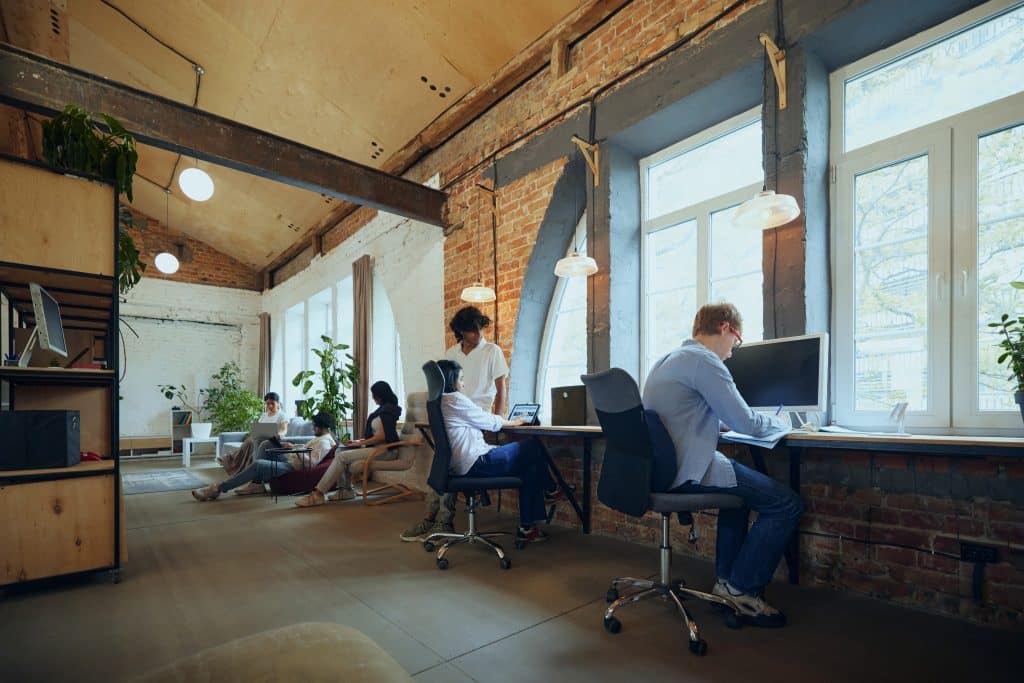In the ever-expanding world of remote work, the hunt for the perfect place to set up a laptop is real.
Whether you’re sipping a flat white at a corner café in Lisbon or plugging into high-speed internet at a co-working hub in Medellín, the options are endless. And so is the debate. When it comes to a solid digital nomad workspace comparison, remote workers are split. Is the buzz of a coffee shop the ultimate productivity boost, or do co-working spaces offer unmatched comfort and consistency? Let’s dive into what today’s nomads are really choosing in this digital nomad workspace comparison guide—and why.
The Rise of the Digital Nomad Lifestyle
Before we break down the digital nomad workspace comparison, it’s essential to understand how this lifestyle even became a global trend. The remote revolution didn’t start with the pandemic—it only accelerated it. For years, freelancers, developers, designers, and writers have been trading cubicles for coworking desks and corner cafés.
Places like Chiang Mai, Bali, and Lisbon have transformed into digital nomad hubs, thanks to their affordable living costs, reliable Wi-Fi, and creative communities. If you’re just getting started with the lifestyle, head over to Viral Voyage’s digital nomad category for more tips on how to get going.
Co-Working Spaces: The Pros and Cons
Co-working spaces are more than just offices. They’re ecosystems built around productivity, networking, and comfort. Here’s a closer look at why they win favor in many digital nomad workspace comparison discussions.
Pros of Co-Working Spaces
1. Fast, Reliable Internet: No surprise here. Strong Wi-Fi is a must for remote workers. Co-working spaces usually offer lightning-fast connections, often with backup networks.
2. Professional Atmosphere: When you’re surrounded by others working, it’s easier to stay motivated. Unlike a café where people come and go, these spaces maintain a focused vibe.
3. Networking Opportunities: Want to collaborate on a project or find a developer for your startup? Co-working hubs are often filled with professionals from every field.
4. Amenities Galore: Think ergonomic chairs, meeting rooms, printers, and sometimes even nap pods or free yoga classes.
Explore more travel hacks to stay productive while on the road.

Cons of Co-Working Spaces
1. Monthly Costs: Access isn’t free. While day passes exist, monthly fees can eat into your travel budget, especially in more expensive cities.
2. Rigid Hours: Some places close early or require check-ins, which might not suit night owls or those on different time zones.
3. Less Local Flavor: You could be in Prague or Playa del Carmen and still feel like you’re in a startup in San Francisco. Co-working spaces often lack that “authentic” local vibe.
For a more wallet-friendly experience, check out these budget travel tips to keep your expenses in check while still enjoying great workspaces.
Cafés: Cozy Vibes or Chaotic Chaos?
Cafés have long been the go-to for freelancers and nomads alike. But in any honest digital nomad workspace comparison, cafés are a mixed bag. Let’s break it down.
Pros of Working from Cafés
1. No Membership Fees: Buy a coffee and you’re in. For nomads on tight budgets, this is a lifesaver.
2. Local Atmosphere: You get to feel the heartbeat of the city. Whether it’s live jazz in Paris or street chatter in Hanoi, cafés offer a unique charm.
3. Freedom and Flexibility: Pop in, grab a table, work a few hours, then move on. No contracts. No commitments.
Need some inspiration on where to go next? Check out Viral Voyage’s destination ideas here.
Cons of Working from Cafés
1. Unstable Internet: This is the biggest gamble. Speeds vary, and outages are not uncommon.
2. Limited Comfort: Hard chairs, tiny tables, loud neighbors—it’s not always the most ergonomic environment.
3. Social Pressure: Let’s face it, after nursing one cappuccino for three hours, you start to feel those glares from the barista.
Still, for digital nomads looking for that cozy, caffeine-fueled charm, cafés continue to be a top contender in any digital nomad workspace comparison.

Productivity: Who Wins?
The productivity debate is central to the digital nomad workspace comparison. Co-working spaces clearly win in structured settings. If your job demands long Zoom calls, screen sharing, or high-concentration coding sessions, they’re your best bet. On the flip side, writers, creatives, and ideation-heavy roles often thrive in cafés. The background noise can oddly stimulate flow states, while the environment sparks creativity.
To boost productivity wherever you are, consider setting clear work blocks, investing in noise-canceling headphones, and sticking to a daily routine. These tips can make a difference whether you’re desk-hopping in Bali or settling into a French café.
Cost Comparison: Budget vs. Value
When it comes to the digital nomad workspace comparison, cost plays a key role—especially if you’re on a long-term journey. A co-working pass might run anywhere from $50 to $300+ a month, depending on the location and perks. Cafés, meanwhile, cost the price of a coffee—roughly $2 to $5 per visit. But that can add up over time, especially if you’re grabbing breakfast and lunch there too.

Community and Connection
Humans are social creatures, even when we’re chasing solitude. That’s why community becomes a surprising factor in any digital nomad workspace comparison.
Co-working spaces naturally foster community through events, workshops, and casual encounters. You can end up meeting your next travel buddy, mentor, or client right across the room. In cafés, community is hit or miss. Some spots become regular haunts where you might build relationships over time. Others are more transient, making it hard to connect. To connect with the wider travel community, don’t miss Viral Voyage for travel insights and community features.
Safety and Equipment Security
Remote workers carry valuable gear—laptops, hard drives, and sometimes even cameras or podcast equipment. In a secure digital nomad workspace comparison, co-working spaces generally come out on top. They offer lockable storage, reception desks, and secure entrances. Cafés? Less so. You risk your gear every time you step away for the restroom. If safety and security are high on your priority list, co-working spaces win the point here.

Best of Both Worlds: Hybrid Nomads
Many digital nomads take a hybrid approach—and that’s where the digital nomad workspace comparison finds balance. Mornings in a café for a chill start, then afternoons in a co-working hub for video calls and focus sprints. This combo lets you tap into the best of both options without burnout or boredom. Plus, splitting your time can also split your costs. Consider getting a 10-day pass at a co-working space and using cafés on alternate days.
Location, Location, Location
Some cities naturally lean one way or the other. In Bali, co-working is huge—places like Dojo or Outpost are almost cultural landmarks. In Paris, cafés dominate the freelancer scene, with cozy corners and bottomless espresso. In your personal digital nomad workspace comparison, location matters. The infrastructure, community, and vibe of a place will guide your choice. So, do your research before you fly.
Your Workspace, Your Rules
There’s no clear winner in the digital nomad workspace comparison. The “best” option depends entirely on your needs, personality, and workload. Do you crave structure and networking? Go for co-working spaces. Prefer freedom and local vibes? Stick to cafés. Or, like many nomads, combine both for the ultimate remote lifestyle. As the line between work and travel continues to blur, one thing’s for sure: the world is your office. Choose wisely—and work well.



